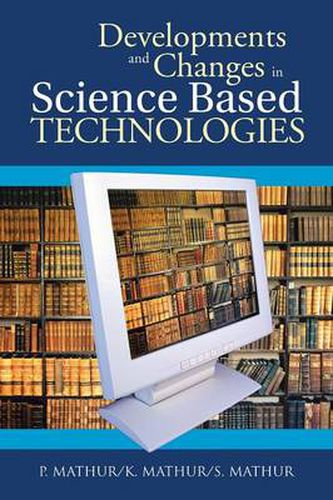Readings Newsletter
Become a Readings Member to make your shopping experience even easier.
Sign in or sign up for free!
You’re not far away from qualifying for FREE standard shipping within Australia
You’ve qualified for FREE standard shipping within Australia
The cart is loading…






This title is printed to order. This book may have been self-published. If so, we cannot guarantee the quality of the content. In the main most books will have gone through the editing process however some may not. We therefore suggest that you be aware of this before ordering this book. If in doubt check either the author or publisher’s details as we are unable to accept any returns unless they are faulty. Please contact us if you have any questions.
With scientific developments, certain new technologies based on such scientific principles have now been adopted worldwide. This has resulted in complete or partial eradication of some old technologies. Changes in technologies have become more apparent after the midtwentieth century. The world prosperity has improved now, and constrains of the Second World War are no longer felt. Thus the light production using incandescent lightbulb has now become a thing of the past, while fluorescence-based light production has resulted in saving large amounts of generated electric power. Thermal steam-powered (coal-based) locomotive are now completely replaced by diesel and electricity-powered locomotives. Technological changes are constantly being reported in the news. Even before this book was published, in which the replacement of electronic tubes (valves) by silicon-based transistors was included as a chapter, now there is report of carbon nanotubes replacing transistors. In agriculture, there has been a report of a genetically engineered plant (TomTato) that shall produce both potatoes and tomatoes. Human memory is short-lived. The purpose of the present book is to demonstrate such changes, with selected examples only. I hope more of the younger generation shall learn that the technologies, which they are now using, had their old predecessors. Human memory is short-lived. The new generation may not be aware of a once-useful technology getting extinct or being replaced due to the development of a better and stronger new technology. Examples of such changes are numerous, but here we have only used selected examples to illustrate such changes.
$9.00 standard shipping within Australia
FREE standard shipping within Australia for orders over $100.00
Express & International shipping calculated at checkout
This title is printed to order. This book may have been self-published. If so, we cannot guarantee the quality of the content. In the main most books will have gone through the editing process however some may not. We therefore suggest that you be aware of this before ordering this book. If in doubt check either the author or publisher’s details as we are unable to accept any returns unless they are faulty. Please contact us if you have any questions.
With scientific developments, certain new technologies based on such scientific principles have now been adopted worldwide. This has resulted in complete or partial eradication of some old technologies. Changes in technologies have become more apparent after the midtwentieth century. The world prosperity has improved now, and constrains of the Second World War are no longer felt. Thus the light production using incandescent lightbulb has now become a thing of the past, while fluorescence-based light production has resulted in saving large amounts of generated electric power. Thermal steam-powered (coal-based) locomotive are now completely replaced by diesel and electricity-powered locomotives. Technological changes are constantly being reported in the news. Even before this book was published, in which the replacement of electronic tubes (valves) by silicon-based transistors was included as a chapter, now there is report of carbon nanotubes replacing transistors. In agriculture, there has been a report of a genetically engineered plant (TomTato) that shall produce both potatoes and tomatoes. Human memory is short-lived. The purpose of the present book is to demonstrate such changes, with selected examples only. I hope more of the younger generation shall learn that the technologies, which they are now using, had their old predecessors. Human memory is short-lived. The new generation may not be aware of a once-useful technology getting extinct or being replaced due to the development of a better and stronger new technology. Examples of such changes are numerous, but here we have only used selected examples to illustrate such changes.